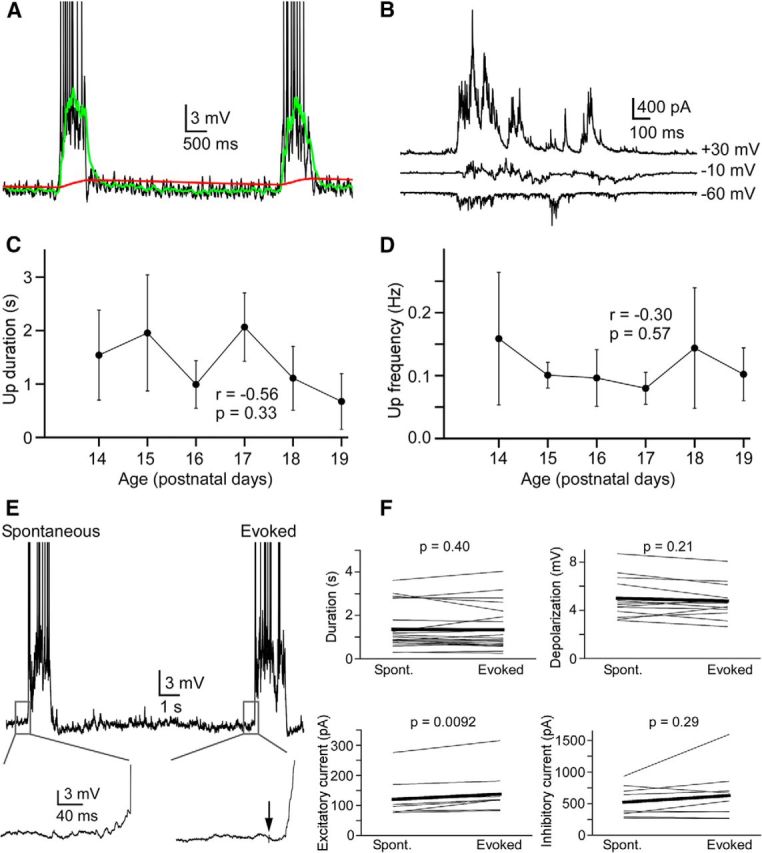Figure 3.

Properties of spontaneous and evoked Up states. A, Implementation of the offline algorithm for detecting Up and Down state transitions in a L5 pyramidal cell. Green trace represents a “fast” exponential moving average. Red trace represents a “slow” exponential moving average. The points of intersection of these two traces are considered the Up state initiation and termination times. Action potentials are truncated. B, Up states recorded in voltage clamp at different holding potentials from an L5 pyramidal cell. C, Up state duration was not correlated with age (n = 20, P14; n = 20, P15; n = 18, P16; n = 7, P17; n = 15, P18; n = 13, P19). Error bars indicate SD. D, Up state frequency was not correlated with age (n = 10, P14; n = 9, P15; n = 9, P16; n = 8, P17; n = 8, P18; n = 10, P19). Error bars indicate SD. E, Examples of spontaneous and electrically evoked Up states recorded in the same L5 pyramidal cell. Insets, Magnification of traces near the Up state onset. Action potentials are truncated. F, Comparisons of spontaneous and electrically evoked Up states in L5 and L2/3 pyramidal cells. Data from single cells are paired. The only significant difference between spontaneous and evoked Up states was in the excitatory current (n = 22, duration; n = 13, depolarization; n = 13, firing rate; n = 9 excitatory current; n = 9, inhibitory current).
